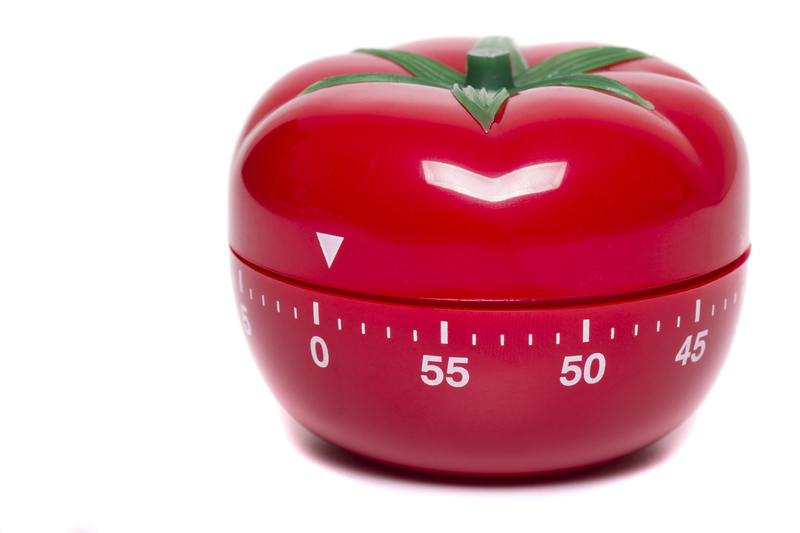Curtain Cleaning Strategies for a Spotless Home
Posted on 02/09/2025
Curtain Cleaning Strategies for a Spotless Home
Keeping your home sparkling clean goes far beyond simply mopping floors and dusting shelves. Clean curtains play a crucial role in maintaining a fresh, healthy environment. Yet, many homeowners overlook curtain cleaning, allowing dust, allergens, and odors to accumulate. In this comprehensive guide to curtain cleaning strategies, you'll discover practical tips, expert techniques, and secrets to achieving spotless, fresh-smelling drapes that enliven your home and support your family's well-being.
Why Curtain Cleaning Matters: Beyond Aesthetics
Curtains are more than just decorative window dressings. They silently trap dust, pollen, pet hair, and even bacteria over time, which can contribute to allergies or diminish indoor air quality. Neglecting your curtain care routine can lead to:
- Persistent musty odors in living spaces
- Visible stains, discoloration, and fabric deterioration
- Aggravated allergy symptoms due to accumulated dust mites and pollen
- Shortened lifespan of your window dressings
By prioritizing curtain cleaning routines, you'll not only enhance your home's visual appeal but also foster a healthier environment for all occupants.

How Often Should You Clean Your Curtains?
One of the most common curtain care questions is: How frequently should you clean your drapes? The answer depends on various factors, such as household location, presence of pets and children, and overall air quality. As a general rule:
- Light cleaning (dusting and vacuuming): Every 1-2 weeks
- Deep cleaning (machine wash, dry clean, or steam): Every 3-6 months
- Immediate spot treatment: As soon as spills or stains occur
Homes located near busy roads, or with smokers and multiple pets, may require more frequent curtain maintenance.
Understanding Your Curtain Fabrics
Different curtain materials require specific cleaning methods to prevent damage or shrinkage. Before applying any cleaning strategy, always check the manufacturer's label for fabric care instructions. Here's an overview of common curtain fabrics and the best cleaning approach for each:
- Cotton drapes: Machine washable, but may shrink in hot water. Use cold or lukewarm water for washing.
- Polyester curtains: Durable, easy to clean, and typically machine washable.
- Linen curtains: Should be hand-washed or dry-cleaned to preserve texture and shape.
- Velvet drapes: Require gentle vacuuming and professional dry cleaning. Avoid water-based cleaning.
- Silk curtains: Extremely delicate; always opt for professional cleaning to prevent damage.
- Sheer or lace: Hand-wash with mild detergent or use the delicate cycle in your washing machine with a mesh laundry bag.
Tip:
If in doubt, always test a tiny, hidden area before applying any curtain cleaning product or technique!
Top Curtain Cleaning Strategies for a Spotless Home
1. Regular Dusting and Vacuuming Curtains
One of the simplest ways to maintain spotless curtains is consistent dust removal:
- Use a handheld vacuum with a soft brush attachment to gently suction dust from top to bottom.
- Run the vacuum horizontally to catch creases where dust hides.
- For delicate fabrics, try a lint roller or a dry microfiber cloth instead.
- Don't forget to clean both sides of the curtain panels!
2. Spot Cleaning Curtain Stains
Accidents happen! Here's how to handle spills without risking a full curtain wash:
- Act fast: The quicker you treat the stain, the easier it will be to remove.
- Blot, don't rub: Press a clean, dry cloth on the stain to absorb liquids without spreading.
- Use mild cleaners: For most stains, mix a few drops of mild dish soap with lukewarm water. Dab the solution on the mark, then blot dry.
- Avoid bleach: Harsh chemicals can weaken or discolor fabrics.
- For oil-based stains, sprinkle cornstarch or talc powder to absorb residue before blotting.
3. Machine Washing Curtains: What You Need to Know
Many modern curtains can be cleaned in your washing machine, saving time and effort. To machine wash curtains effectively:
- Remove all hooks, rings, and hardware before washing.
- Use cold water and a gentle detergent designed for delicate fabrics.
- Opt for the gentle/delicates cycle and avoid overloading the drum.
- For sheer or lace curtains, place panels in a mesh bag for extra protection.
- Air-dry whenever possible: Heat from dryers can cause shrinkage or damage certain fabrics.
4. Hand Washing Delicate Drapes
If your curtains are made from linen, silk, lace, or other delicate materials, hand washing is safest:
- Fill a basin with cool or lukewarm water and a few drops of mild detergent.
- Swirl curtains gently--never scrub or wring.
- Rinse thoroughly with clean water to remove all soap.
- Press between towels to absorb moisture, then hang to dry.
5. Steam Cleaning Curtains for a Refresh
One of the most efficient curtain cleaning strategies is steaming. Steam cleaners remove surface dust and kill bacteria, eliminating odors without detaching the curtains. Here's how:
- Use a garment or handheld steam cleaner suitable for upholstery and fabric.
- Starting from the top, move the steamer in downward strokes, focusing on heavily soiled areas.
- Let the curtains air out completely after steaming.
- Check your curtain material: Some delicate fabrics may not be suitable for steaming--always spot-test first.
6. Dry Cleaning: When is It Necessary?
For particularly expensive, lined, or delicate drapes (such as velvet or silk), professional dry cleaning is the safest cleaning choice. Attempting home remedies on these can risk permanent shrinkage, fading, or texture changes. Always follow the care label's recommendations!
Advanced Tips for Maintaining Spotless Curtains
Don't Forget Curtain Hardware and Rails
Dust and grime can accumulate on curtain rods, rings, and tiebacks--regularly wipe down these components with a damp cloth and gentle cleaner to keep them rust-free and looking their best.
Freshen Up with Natural Deodorizers
Dreaming of fragrant, fresh curtains? Here's how you can naturally deodorize your drapes:
- Spritz curtains lightly with a mixture of water and a few drops of essential oil (lavender, citrus, or eucalyptus work well).
- Place open baking soda containers on window sills behind curtains to absorb persistent odors.
- Allow sunlight and fresh air to naturally refresh fabrics--hang curtains outside on breezy days if possible!
Prevent Sun Damage and Discoloration
Extended sun exposure can fade and weaken curtain fabrics. Preserve their beauty by:
- Rotating curtain panels every few months for even exposure.
- Using protective linings for delicate or expensive drapes.
- Choosing UV-resistant curtain fabrics for rooms with intense sunlight.
How to Keep Curtains Clean for Longer
- Keep windows closed during high pollen seasons to limit allergen buildup.
- Regularly clean window sills, frames, and glass to minimize dust transfer onto curtains.
- Encourage a no-smoking policy indoors and minimize the use of strong-smelling chemicals in curtained rooms.
- Bathe and groom pets frequently to reduce shed fur that settles on curtain surfaces.
Special Curtain Cleaning Situations
Cleaning Blackout Curtains
Blackout curtains feature special linings for light control and insulation. To preserve their effectiveness:
- Always follow the care label--many are only suitable for gentle hand washing or spot cleaning.
- Use a vacuum with a brush attachment to remove dust.
- Never wring or twist blackout linings, as it can cause damage and decrease functionality.
Removing Mold and Mildew from Curtains
If you live in a humid environment, keep an eye out for mold or mildew, especially behind curtains close to windows. To tackle this problem:
- Brush off loose spores outdoors using a soft brush.
- Wash with a mix of warm water and mild detergent; add a cup of white vinegar for added anti-mold action.
- Allow curtains to dry completely in direct sunlight, which naturally sanitizes fabrics.
- If growth persists, consult a professional curtain cleaner for specialized treatment.
Handling Heavily Soiled or Antique Curtains
- For irreplaceable or antique drapes, always seek the expertise of a professional restoration service.
- Do not use harsh chemicals, bleach, or hot water, which can cause irreparable damage to both fabric and dye.
- Store antique curtains in cool, dry conditions, away from direct sunlight and pests.
DIY Eco-Friendly Curtain Cleaning Solutions
Many commercial curtain cleaning products contain harsh chemicals. If you prefer green alternatives, try these eco-friendly curtain cleaning strategies:
- Mix one part white vinegar with three parts water for an effective deodorizer and stain remover (always spot-test first).
- Use baking soda sprinkled on curtains to absorb stubborn odors before light vacuuming.
- Create a gentle soap solution with castile or olive-oil-based soap for hand washing.

When to Replace Your Curtains
Despite the best curtain cleaning strategies, there comes a time when drapes are past saving. Consider full replacement when you notice:
- Extensive sun-fading or large, permanent stains
- Significant wear, fraying, or holes
- Lingering smells that cleaning cannot remove
- Mold or mildew growth that keeps returning, posing health risks
Final Thoughts: Integrating Curtain Care into Your Cleaning Routine
A clean home is a happy, healthy home. By applying these curtain cleaning strategies, you'll ensure your drapes contribute to--rather than detract from--your indoor environment. Routine dusting, careful selecting of cleaning methods according to fabric, and prompt spot cleaning can make all the difference.
Remember, spotless curtains not only elevate your home's style but also improve air quality and longevity of your drapes. Incorporate these techniques into your regular household chores, and enjoy fresher, cleaner, more beautiful living spaces every day.
Ready for Spotless Curtains?
By investing a little extra care in your curtain cleaning routine, you'll keep your home looking its very best--year round. For more tips and tricks on household cleaning, stay tuned to our blog, and don't forget to share your own curtain care tips in the comments below!




